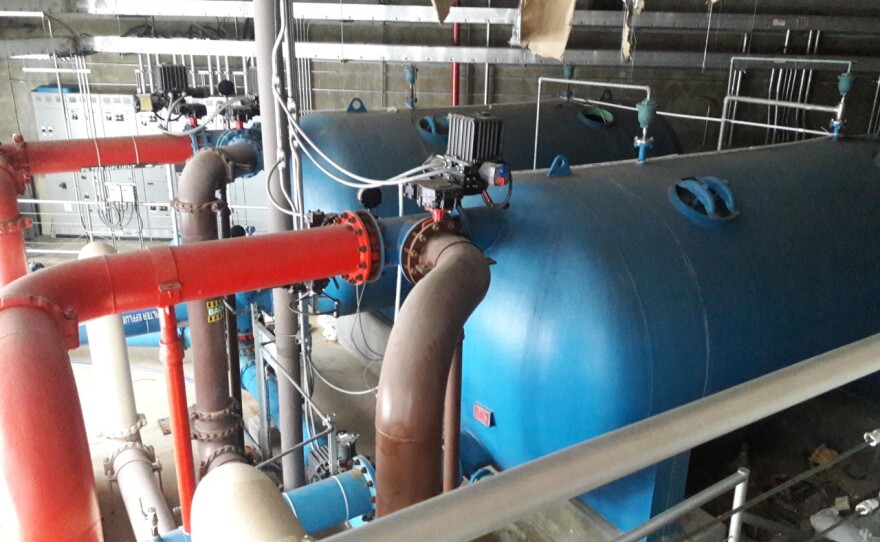After more than 25 years, the Spiro Plant off the Park City Municipal Golf Course sits cold and dark; it’s mostly empty, and the insulation foam is falling from the rafters. Park City Water Quality and Treatment Manager Michelle DeHaan has been with the city for eight years, and she’s feeling a bit sentimental about the Spiro Water Treatment Plant coming down.
“I do have a little bit of nostalgia about this plant being knocked down, because I’ve been involved in arsenic treatment for a couple of decades in my career," DeHaan said.
The Spiro Plant came online in 1993. That’s when water from the Spiro Tunnel started being treated for arsenic, a heavy metal from Park City’s mining days that can cause cancer with long-term, high-level exposure. DeHaan says the plant met Environmental Protection Agency standards for arsenic levels.
“The city actually built one of the very first, and we think maybe the first, arsenic treatment plant to treat Spiro Tunnel water, because the arsenic concentration was 60 micrograms per liter, so greater than the 50 micrograms per liter standard that was originally in place," DeHaan said. "So this treatment facility that became operational then was really state-of-the-art because nobody had ever done this kind of work.”
Park City will spend around $100 million to construct the new Three Kings Water Treatment plant and related projects. The new facility is designed to comply with state standards for drinking water and stream water quality. Three Kings will treat all the water from the Judge Tunnel and some from the Spiro Tunnel and Thiriot Springs. DeHaan says upgrading the facility will increase capacity and allow the city to better detect smaller levels of contaminant.
“It helps us, in the long run, understand how well we are doing at protecting the environment, in addition to the drinking water customers,” DeHaan said.
Something DeHaan says she won’t miss is how the plant floods every spring when Thiriot Springs’ water levels rise. But she says the plant has interesting stories to tell.
“We always entertain ourselves with stories like a miner in a yellow slicker and what that would look like—there's some yellow slickers around here," DeHaan said, pointing to the floor. "There's also some interesting noises in this building, and you can hear it. We’ll be able to hear the running water in the background. The tunnel flows vary in time, and so you hear different flows in this plant as well.”
Mostly, though, DeHaan is proud of Park City’s work at the plant as a pioneer in arsenic treatment.
“EPA scientists were here working hand in hand with the folks that were here at the time," DeHaan said. "When the plant got upgraded, they came back to learn how well things were being done and what we could do to enhance arsenic removal for other utilities in the country. So we continue to be one of the utilities in the country who is continuously looking to do the best we can for our customers.”
The Quinn’s Junction Water Treatment Plant will handle Park City’s water supply until Three Kings comes online in 2022.









